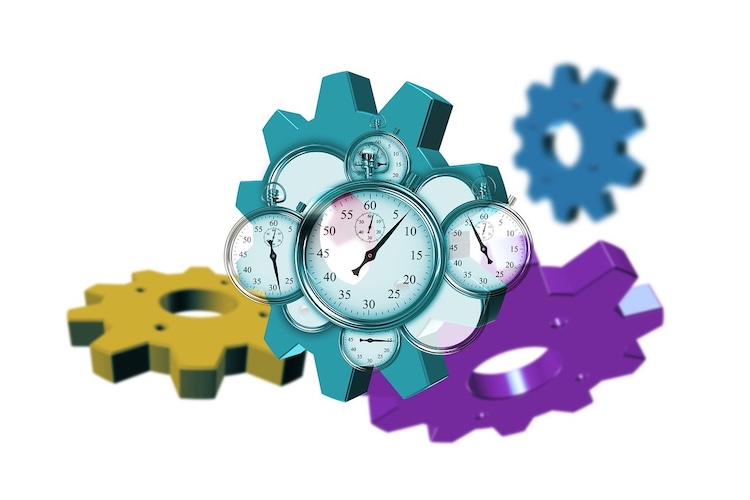Considering the topic, this has the potential to be a very short blog post. After all, we’re looking at comparing the schedule of collaborative delivery versus design-bid-build (DBB) delivery. So when is collaborative delivery faster than design-bid-build? Typically, almost always. And when is collaborative delivery slower? Again, in general terms, that’s extremely rare.
A key benefit of the collaborative models is their speed to delivery versus traditional DBB. Research from the WCDA shows that a primary driver for using collaborative delivery is its ability to reduce project schedule (2012 Municipal Owners Customer Satisfaction Survey of Water Design-Build Projects). This is largely due to the ability to concurrently perform design, subcontracting, procurement, and construction activities. In DBB, it’s all sequential.
Collaborative delivery can foster broader risk sharing on a project, giving all parties a stake in achieving a successful project by the owner’s standards. It can build a best-value project that balances costs, types, and timing. It can fuel innovation in technology and beyond, too. When it lines up with the owner’s comfort zones, and when the owner, contractor, and designer work together (collaboratively) early and often, it’s a win all the way around. Collaborative methods can drive the best possible outcomes in cost, constructability, performance, and risk allocation. And from a schedule perspective, collaborative delivery models can be tough to beat. When owners have a rigid end date, perhaps driven by a consent decree or permit deadline, collaborative delivery can be a huge asset to getting the project done on time or even ahead of schedule with contractual and financial commitments by the design-build entity to backstop that risk. In DBB, the owner retains that risk and is in the middle of the designer and the builder.
In short, collaborative delivery methods are routinely faster. Let’s consider some scenarios:
There can be times when various situations pump the brakes on collaborative delivery’s speedy capabilities and level the schedule playing field. These can include permit delays or subsurface discoveries, but these would challenge even a DBB job. Considering all things that could upend your schedule is good for an owner to game-plan for early.
Another scenario is in a construction management at-risk (CMAR) or progressive design-build (PDB) model that involves two phases: Phase 1 that defines the scope and prices the full project and Phase 2 that delivers the remaining design-build portion of the project at the price established in Phase 1. In Phase 1, if the owner and lead contracting entity cannot agree on a price, schedule, or risk allocation, it can result in an off-ramp scenario where the owner can terminate the contract and negotiate with another firm or get the job done under a DBB structure. This is rare. And it’s why so much attention is placed on a qualification process that narrows your bidding field to a set of firms that have strong financials, capable bench strength, and a collaborative delivery track record.
An owner who is unfamiliar with collaborative delivery can inadvertently interfere with the process and cause its own delays, leading to claims by the design-build entity. For example, let’s say you reach the end of Phase 1 and have your guaranteed maximum price (GMP) or lump sum. Then in Phase 2 you continue to give input into the design or manner of construction that perhaps conflicts with what was agreed upon in Phase 1. This can either be deliberate or a misunderstanding in communication. With that said, if it affects the design-build critical path, it can cause delays and claims. Owners are advised before embarking on collaborative delivery for the first time to educate themselves about the various delivery methods and how to avoid times when critical errors are made. Education for the entire staff and formal communication processes can help owners avoid a self-inflicted delay.
Collaborative delivery also may not be as big of a difference-maker on smaller scale, more straightforward projects where there’s less schedule variance and need for oversight.
Other times when circumstances can greatly interfere with the collaborative delivery pace can include: projects with a big potential for permitting snags; projects where funding isn’t fully in place; and projects where the purchase of land/right-of-way is incomplete. If you have a design-builder ready to go with a firm price at the end of Phase 1 and you need a six-month delay to secure funding or obtain a permit that’s been held up, it’s likely the Phase 1 price will need to be reset, resulting in further delay.
Like any situation in life, there are scenarios that can slow things down. Collaborative delivery isn’t necessarily the right answer for every project. How much does schedule matter? What is the position on cost versus best value? What’s the appetite for innovation? Likewise, what’s the inclination for risk sharing and control? Water and wastewater projects are becoming more technologically complex with global supply chain issues and significant liabilities for the public welfare should the capital spent not achieve the desired outcome. Transferring this risk—and balancing the owner’s interest in involving stakeholders in the design process—is a fundamental basis for collaborative delivery.
Collaborative delivery will (almost) always be faster. To avoid the potential for delays, it’s best for owners to thoroughly prepare themselves well ahead of time. That’s where the WCDA can help!

